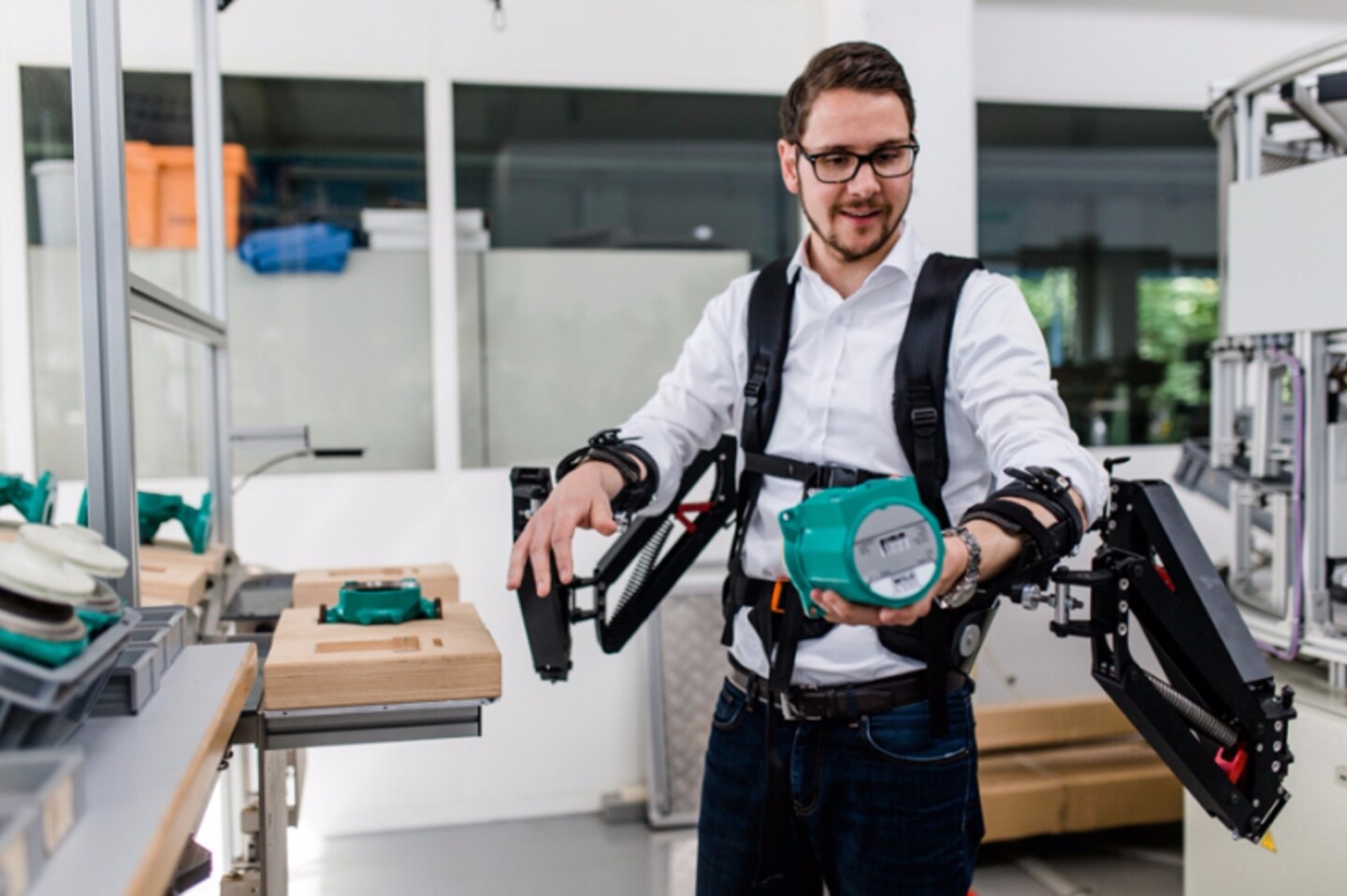The development of powered exoskeletons has so far been largely restricted to the laboratory, the military, and areas such as rehabilitation therapy. This kind of technology also has obvious potential in industry, where constant heavy lifting is still very much a part of many working lives. Recently in Stuttgart, the Robo-Mate project unveiled an exoskeleton designed specifically for industrial use that can make 10 kilos feel like 1.
One of the often overlooked benefits of modern technology is how much backbreaking labor workers are spared. It isn't too long ago that even so-called high tech industries required an astonishing amount of lifting and carrying. Even plastics factory making small household items required as much manual labor as a metal works turning out petrol engines. Mechanisation and automation have done away with a lot of this, but according to the Work Foundation Alliance, 44 million workers in the EU alone still suffer from musculoskeletal disorders. In some industries, workers still lift 10 tonnes a day.
The reason why this still happens on a daily basis is that not every task lends itself to automation. Some involve making things on a very small scale or others involve complicated, unpredictable moves, like dismantling a car, that are well beyond even the most advanced robots. The result is human beings literally having to do the heavy lifting, with all the physical wear and tear that implies. It also has knock-on effects for employers trying to retain workers, health care systems, and even the ability of countries to keep jobs from going abroad.

Robo-Mate project began in 2013 as a consortium of twelve research institutes and companies in seven European countries. The idea is to produce a powered exoskeleton that acts as a support frame that can reduce the physical workload for assembly and disassembly work by a factor of ten.
The Robo-Mate exoskeleton is made up of series of inter-supporting modules for the arms, trunk, and legs. The arm modules actively support the wearer's arms, taking the load, so it feels only a tenth of its real weight. Attached to the arm modules is the trunk module, which supports the back and spine and prevents twisting or slipped discs. Meanwhile, the leg modules support the inner thighs and act like a seat while squatting, so holding the load requires no additional strength.

According to the project team, the key to developing the exoskeleton was using software to simulate tasks involving assembly and disassembly, and then identifying the stresses placed upon the body. This allowed the team to sort out what tasks the exoskeleton is suitable for by considering it and the body as a single unit.
The first prototype of the Robo-Mate exoskeleton was unveiled in a demonstration at Fraunhofer IAO in Stuttgart on 12 June, but the team says that a great deal of work still needs to be done. Currently the safety requirements of the exoskeleton are being evaluated and streamlined case for the unit is being developed as part of an effort to make it more acceptable with workers as an everyday tool.
“We’re not looking to make superheroes," says Dr. Leonard O`Sullivan, a specialist in ergonomics and product design at the University of Limerick in Ireland. "We want to develop a helper that supports production workers in their everyday work and keeps them healthy."
Source: Robo-Mate












